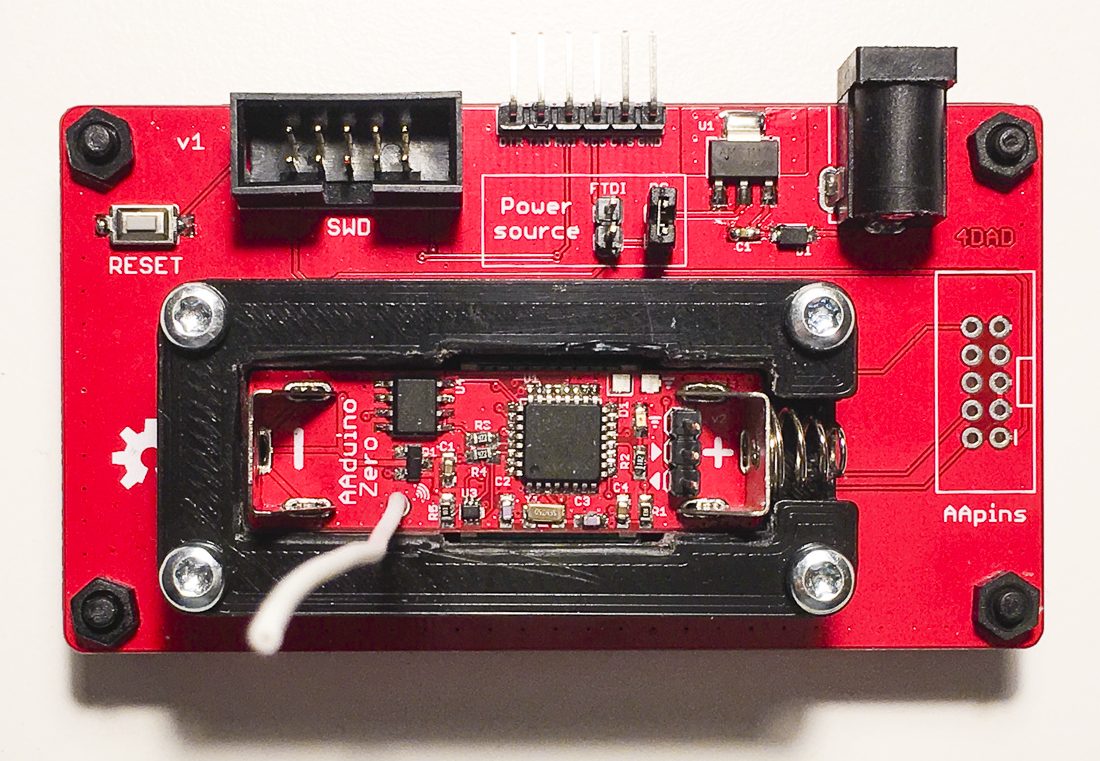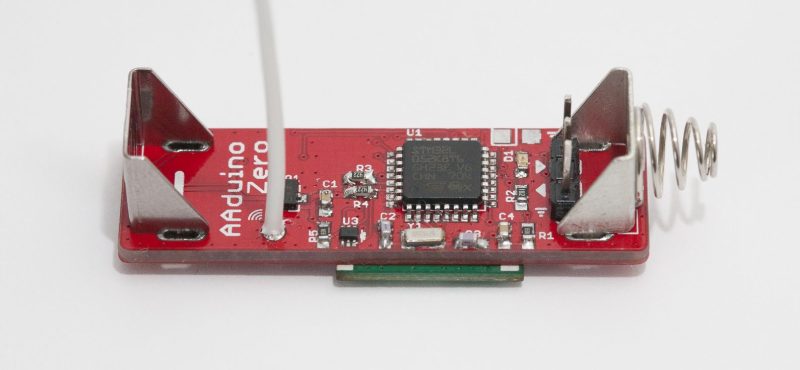We’ve seen [Johan]’s AA-battery-sized Arduino/battery crossover before, but soon (we hope!) there will be a new version with more MIPS in the same unique form factor! The original Aarduino adhered to classic Arduino part choices and was designed to run as the third “cell” in a 3 cell battery holder to relay temperature readings via a HopeRF RFM69CW. But as [Johan] noticed, it turns out that ARM development tools are cheap now. In some cases very cheap and very open source. So why not update an outstanding design to something with a little more horsepower?
The Aarduino Zero uses the same big PTH battery terminals and follows the same pattern as the original design; the user sticks it in a battery holder for power and it uses an RFM69CW for wireless communication. But now the core is an STM32L052, a neat low power Cortex-M0+ with a little EEPROM onboard. [Johan] has also added a medium size serial flash to facilitate offline data logging or OTA firmware update. Plus there’s a slick new test fixture to go along with it all.
So how do you get one? Well… that’s the rub. It looks like when this was originally posted at the end of 2017 [Johan] was planning to launch a Crowd Supply campaign that hasn’t quite materialized yet. Until that launches the software sources for the Zero are available, and there are always the sources from the original Aarduino to check out.















Hey, just a typo: it’s not “Aarduino” but “Aaduino” ;)
Actually, if it eats ants for a power source, then it IS an Aarduino.
Oh, unexpected surprise to see this get covered again on Hackaday :D Servers me just right for not getting the campaign of the ground, it’s the second top item on my todo list for this fall. I promise.
Suggestion: why not look to incorporate two proper AA tabs on the PCB? Seems that would be sticking to bog-stock components, and would negate the need for a 3-AA pack. Yes, terminals add to the BOM, but they’re offset for the user not needing to get the 3-AA pack. Additionally, it makes the device more compact.
I can see a lot of projects running off of an Arduino dev board with built-in battery holder, to be sure!